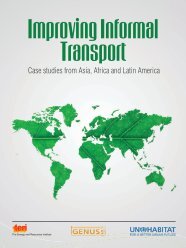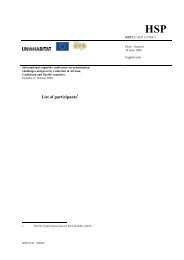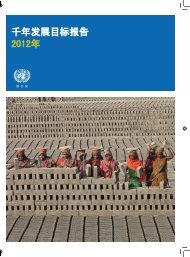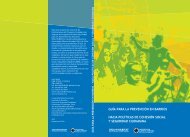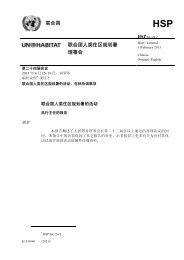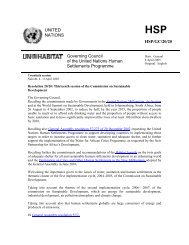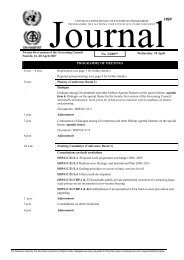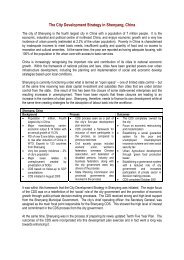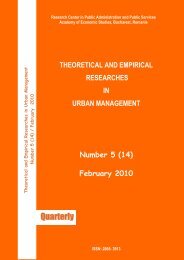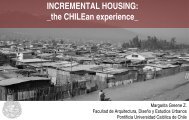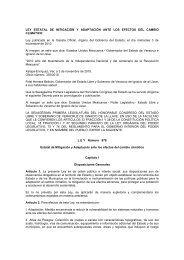Harmonious cities - UN-Habitat
Harmonious cities - UN-Habitat
Harmonious cities - UN-Habitat
Create successful ePaper yourself
Turn your PDF publications into a flip-book with our unique Google optimized e-Paper software.
URBAN WATCH Project round-up<br />
Water<br />
Tourist success for<br />
Singapore’s new<br />
systems<br />
As a resource scarce city-state,<br />
relying on most of its water supply<br />
from historical rival Malaysia,<br />
Singapore is aiming to reduce this dependence<br />
by introducing innovative technologies<br />
in water recycling and sewage.<br />
Under decades-old treaties, which start expiring<br />
in 2011, Singapore buys more than half<br />
of its water from Malaysia. The water trade<br />
has sparked occasional spats between the two<br />
nations over pricing and other issues.<br />
The planned “sewage super highway” is<br />
aiming to help reduce this dependency, and<br />
is already winning awards before its completion,<br />
due by the end of this year. Singapore’s<br />
deep tunnel sewage system (DTSS) made up<br />
of a 48-km-long deep tunnel that stretches<br />
u r b a n<br />
58 WORLD<br />
November 2008<br />
from Kranji to Changi was awarded at the recent<br />
World Water Congress, Vienna.<br />
The USD 3.65 billion system is a centralised<br />
wastewater treatment plant with a deepsea<br />
outfall near Changi. It began in 2000 to<br />
cater to the country’s increasing population<br />
and growing economy.<br />
Director of Policy at the National Water<br />
Agency, PUB, Tan Yok Gin said that it will<br />
form an integral part of Singapore’s water<br />
supply strategy as it allowed every drop of<br />
water to be collected, treated and further<br />
purified.<br />
“Singapore has come a long way in its used<br />
water management, from the early days of the<br />
night soil bucket system,” Tan said in Vienna.<br />
The Government in Singapore has even<br />
turned this into a tourist attraction. Used water<br />
collected from homes and industries will<br />
be channelled through the deep tunnel to the<br />
Changi Water Reclamation Plant where it is<br />
treated to international standards before being<br />
discharged into the sea or sent to the NE-<br />
Water factory to be bottled — the city-state’s<br />
very own brand of reclaimed water.<br />
The factory where it is made had reportedly<br />
become so popular that the government<br />
decided to promote it as a must-see for<br />
tourists. In its first year of opening, the NE-<br />
Water visitor centre received more than<br />
100,000 people.<br />
Currently, there are four NEWater plants<br />
in Singapore. The fifth plant at Changi will be<br />
Singapore’s largest. NEWater will meet about<br />
30 percent of Singapore’s total water demand<br />
by 2010, when it will also be completely connected<br />
to the new DTSS network.<br />
“By collecting all the used water for treatment<br />
and further reclamation at one centralised<br />
plant, the DTSS allows us to recycle<br />
water on a large scale. Singapore’s 5th NEWater<br />
Factory will be built on the rooftop of the<br />
Changi Water Reclamation Plant. When completed,<br />
the Changi factory will not only be the<br />
biggest in Singapore but one of the biggest in<br />
the world,” added Mr Tan. u<br />
The new “sewage super highway” is aiming to resolve Sinagapore’s water shortages Ph o t o © PuB




